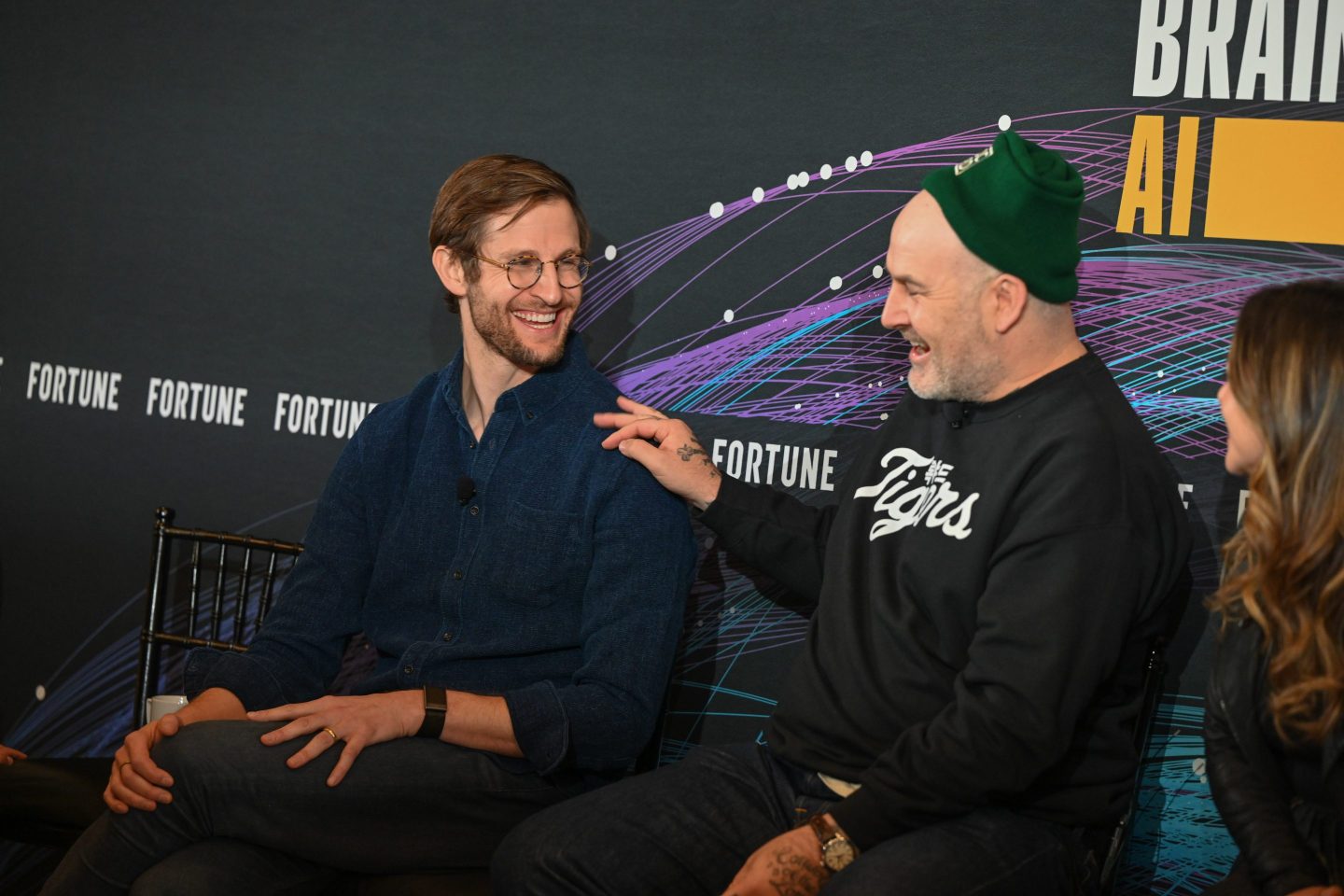Welcome to Monday, Data Sheet readers! Facebook is changing how it handles posts that kinda, sorta look like ads: if marketers want visibility for them, they’ll have to pay. Plus, the U.S. government is putting $425 million behind new supercomputer technologies, with future implications for commercial data analytics applications.
Share Data Sheet with every person you know who has an interest in the business of technology. They can sign up here. I’m constantly evolving what I include (and don’t include) in the newsletter. Please send your feedback and coverage suggestions to the “tips” box.
TRENDING
Changes afoot for Facebook. Starting in January, it will change the visibility that un-promoted marketing posts receive in newsfeeds—effectively forcing big brands to buy more ads. Meanwhile, the social network is rumored to be testing a business edition that would compete with LinkedIn and Google+ but it will have to fight workplace bans. New York Times, Fortune
Germany's Deutsche Bank creates innovation labs. It's teaming up with IBM, Microsoft and HCL Technologies to improve its digital banking services and stave off mobile payment and lending startups. Wall Street Journal
And then there were four. The U.S. State Department has disclosed a data breach on its unclassified email and web sites. It joins the White House, the U.S. Postal Service, and the National Oceanic and Atmospheric Administration on the list of federal agencies impacted in recent weeks. NYT
Does AWS really have the cash to invest cloud services? Google and Microsoft are spending oodles to chip away at its lead, and the e-commerce giant has the "weakest financial hand" of the three. ZDNet
Activist investor at it again. Investment fund Starboard Value bought a 2.4% stake in AOL in the third quarter. That ensures it a voice on either sides of the potential AOL-Yahoo merger it is pushing. WSJ
Cloudy outlook for Google Glass. With the consumer introduction of the smart eyeglasses delayed until next year, some application developers are defecting—including Twitter. Reuters
Biggest. Digital. Billboard. Ever. A new eight-story-high, football-field-long screen in New York's Times Square costs $2.5 million for four weeks of advertising. Google will take it over the night before Thanksgiving with a campaign that runs through the New Year. NYT
Data centers in corn fields. Why did Facebook chose Iowa for its latest site? Hint: the same juicy tax breaks that also lured Google and Microsoft to the big agricultural state—along with plenty of low-cost, wind-generated electricity. WSJ
STATS & PREDICTIONS
More than 2 billion mobile shoppers. That's how many people will buy something from their smartphone or tablet computer by the end of 2017. Juniper Research
STARTUPS & DISRUPTORS
Automation via artificial intelligence. Founded by two ex-Google developers, Scaled Inference just got another $8 million from Khosla Ventures. Its technology could be useful for wide-ranging applications such as detecting fraudulent credit-card transactions or creating personalized digital magazines. TechCrunch
Bitcoin company seeks $50 million. Coinbase is raising another $50 million in capital to fund its alternative digital currency services. Its big rivals are BitPay and Blockchain, both of which recently raised $30 million. TC
MY FORTUNE.COM BOOKMARKS
For female execs, seeing is still believing By Caroline Fairchild
What to do when the government (effectively) shuts down your startup By Ron Bernstein
A former Priceline CEO sees big business in social commerce By John Kell
Is joining a tech startup like buying a lottery ticket? By Anne Fisher
Can BlackBerry's Samsung partnership help it woo businesses? By Michal Lev-Ram
This mother-daughter duo wants to save China's environment By Nina Easton
FOR YOUR INNER TECHNOPHILE
Much ado about supercomputers, and what it means for big data
One closely watched list in scientific circles is the Top500 ranking of the world's faster supercomputers—because of the sheer volume of data these room-sized systems are able to process.
The list is dominated by technologies in use throughout the United States—focused on data-intensive tasks such as counter-terrorism, basic science research, climate change simulations, or oil and gas exploration. Since last June, however, the Top500 has been led by a system at a Chinese university specializing in defense technology.
The U.S. government is determined to change that within the next three years. Last Friday, the Department of Energy (DOE) disclosed plans to spend $300 million on two new supercomputers that will be "five to seven times more powerful" than systems currently in use.
The technologies blessed by the contract—supplied by IBM, NVDIA and Mellanox—will be installed at the Oak Ridge National Laboratory and the Lawrence Livermore National Laboratory. The Argonne National Laboratory will also get a new supercomputer, but its supplier hasn't been announced yet.
Aside from this short-term solution to analyzing ever-growing volumes of data, the DOE and the National Nuclear Security Administration are putting $100 million into a project called FastForward2. The aim of the initiative is to develop "exascale" computers 20 to 40 times faster than systems in use today. Advanced Micro Devices, Cray, IBM, Intel and NVIDIA are all participating in that initiative. By the way, Cray managed to score its own big contract last Friday: it will get $80 million to build its first system in the Middle East in almost two decades.
"High-performance computing is an essential component of the science and technology portfolio required to maintain U.S. competitiveness and ensure our economic and national security," said DOE Secretary Ernest Moniz, in a statement.
Why are the two new supercomputers the DOE plans to install so much faster than what's in use today? IBM touts the technology's "data-centric" approach to processing information. Simply put, more analysis can take place where data is stored, reducing the processing power that has to be dedicated to retrieving it and moving it back and forth between storage hardware and processors.
When data does need to be moved around, it can be done at speeds of up to 17 petabytes per second—which is the equivalent of moving more than 100 billion digital photos.
In the traditional supercomputing model, advances in microprocessor speeds can only go so far, said Dave Turek, vice president of exascale computing at IBM. "It used to be all about the calculation, and now it is all about the data," he said. "We have to put computing in places it never has been before."
Aside from scientific applications such as the ones contemplated by the DOE, this unconventional approach could benefit industries highly dependent on high-performance computing technologies for analytics and business intelligence, such as financial services or oil and gas exploration. "Supercomputing design has to change, and it has to change in a way that very explicitly brings these analytics application to the fore. It's all about accelerating the time to decision," Turek said.
ONE MORE THING
How do you simulate mindbending concepts like black holes and wormholes on the big screen? Director Christopher Nolan dishes on the science and technology behind the blockbuster space movie "Interstellar." Wired
MARK YOUR CALENDAR
Gartner Data Center Conference: Ideas for operations and management. (Dec. 2 – 5, Las Vegas)
IBM Interconnect 2015: Cloud and mobile strategy. (Feb. 22 – 26, 2015; Las Vegas)
Microsoft Convergence 2015: Dynamics solutions. (March 16 – 19, 2015; Atlanta)
Knowledge15: Automate enterprise IT services. (April 19-24, 2015; Las Vegas)
MicrosoftIgnite: Enterprise tech extravangaza. (May 4 – 8, 2015; Chicago)
SAPPHIRE NOW: The SAP universe. (May 5 – 7, 2015; Orlando, Fla.)
VMworld: The virtualization ecosystem. (Aug. 30 – Sept. 3, 2015; San Francisco)











